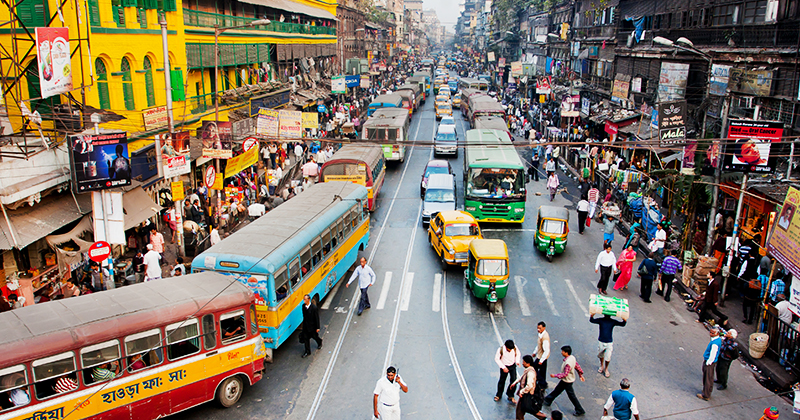Led by rising affluence and urbanisation, India is poised to become the world's third largest consumer market after the US and China. India’s elite and affluent households are the two fastest-growing income classes in the country, and are expected to double to 16% of the population by 2025.
The time could not be more ripe for businesses to take the plunge. With consumption in the country set to triple to US$4 trillion by 2025, we recently organised an iAdvisory session on how Singapore companies can ride India’s growth wave and capture business opportunities.
Boom in consumer spending across cities
India is projected to account for over 416 million urban dwellers by 2050, the result of a nationwide migration wave which has seen more Indians move from rural villages to cities. Consumer spending is set to increase exponentially, as these individuals gain access to new goods, services and experiences.

Singapore companies are well-placed to meet the demands of India’s rapidly emerging consumer lifestyles because of the global recognition and positive perception of the Singapore brand. Many homegrown consumer products that have launched in overseas markets are also able to command premium prices by competing on quality.
However, the populous and diverse nature of the Indian market means Singapore companies should not rely on a one-size-fits-all approach. It is important for businesses to note that domestic consumption in the country is segmented by income brackets, said Himanshu Godara, Senior Manager of Global Marketing at SKP Business.
Before entering the market, companies should first identify the broad spectrum of consumer profiles across Tier 1 cities and Tier 2 cities in India, and the difference in their associated expenditure patterns.
“The same income category of people in metro cities will spend differently from the same income category of people in a Tier 2 city. People in metro cities value time, so they are happy to pay extra to save time,” Mr Godara said. “But if you go to a Tier 2 city, they see more value in terms of money, and what they can get for a certain amount.”
At the same time, people in metro cities (such as Mumbai, New Delhi or Hyderabad, where the cost and quality of living is higher) are more inclined to spend on health and wellness, education, and luxury goods and amenities.
“Many Singapore companies providing healthcare and education are entering India and doing well. Five years ago, you couldn’t find many daycare centres or healthcare institutes in Mumbai; today, there are people ready to pay a premium for quality service,” Mr Godara added. Comparatively, those living in smaller cities (such as Surat, Pune or Amritsar) tend to purchase more mass-produced products.
Singapore consumer companies should conduct in-depth consumer research beforehand, so they can better tailor their product or service to the appropriate market segments in India. With distinct categories of goods and price segments to target, there is more than enough room for companies to grab a slice of the consumer pie.
Rise of the Indian digital consumer
It doesn’t end here – the meteoric rise of the Indian digital consumer will propel India’s economy further, as the country continues to undergo a digital transformation. As more digital infrastructure and services are established in India under the government’s Digital India initiative, what has emerged is a new generation of tech-savvy, digitally empowered and affluent millennials.

To put this into numbers, a third of India’s population is between 15 to 34 years of age, accounting for more than 400 million people. This group has been the main driving force behind the country’s swift e-commerce growth, which shot up by 30% in the last two years alone.
And this is where Singapore companies can come in. Many of them are already plugged into the digital markets of neighbouring ASEAN countries, and they should leverage the expertise they have developed in digital commerce to explore the abundant opportunities in India, said Ong Lixia, Deputy Director of South India and HQ.
Businesses can look to the success story of Web Synergies, a homegrown IT firm that expanded into India 18 years ago. Web Synergies serves B2B and B2C clients, and offers digital commerce solutions such as inventory management, order fulfillment, and CRM and ERP integration. Today, the firm has over 180 local employees in its Hyderabad office.
Advice for Singapore companies
For Singapore companies thinking of venturing into India, here are some tips from Mr Gideon Lim, Founder and CEO of Web Synergies:
1. Make use of the Singapore brand
High regard for the Singapore brand in India opens many doors, and Indian consumers greatly trust foreign goods. Singapore companies should take advantage of this psychological perception to venture into the B2C sphere in India.
2. Ideal location for business process outsourcing
India is an ideal location for business process outsourcing, and companies can consider outsourcing their labour-intensive and non-core activities there. There is a strong pool of talent thanks to India’s large population, and plenty of training facilities available at optimal costs.
3. Be mindful of cultural sensitivities
Companies should be mindful of the cultural sensitivities in a more conservative society such as India. Business management tends to be hierarchical and formal, so a centralised decision-making structure is advised.
4. Engage a market entry partner
Companies without local Indian employees on the ground should engage a market entry partner or consultant to first get a foot in the door, as language barriers may be challenging.

